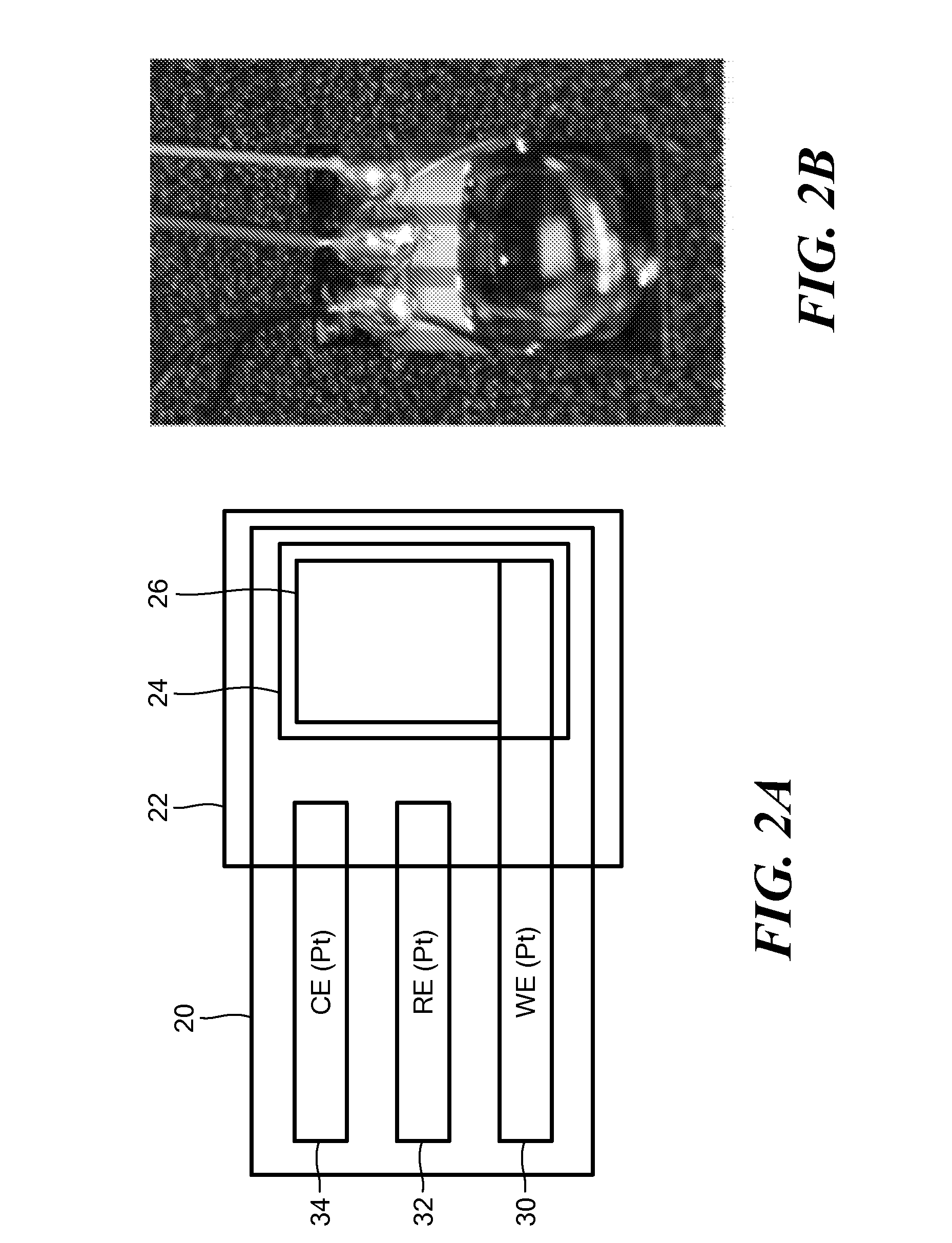Saliva Glucose Monitoring System
a glucose monitoring and saliva technology, applied in the direction of diaphragms, packaged goods, immobilised enzymes, etc., can solve the problems of insufficient blood glucose control, increased case management costs, and more complications of disease, so as to limit the exposure of the coating
- Summary
- Abstract
- Description
- Claims
- Application Information
AI Technical Summary
Benefits of technology
Problems solved by technology
Method used
Image
Examples
example 1
Glucose Tolerance Test by Determination of Saliva Glucose Using Glucose Sensors Fabricated by E-Beam Deposition
[0053]A study was performed on one healthy human subject to conduct saliva glucose monitoring for over 3-hour time period. The subject was asked to fast overnight and then asked to drink a glucose-containing beverage (75 g Trutol®) after fasting saliva samples were taken. The test simulated a glucose tolerance test. Five more saliva samples were taken at 15 min, 30 min, 60 min, 120 min, and 180 min intervals after consumption of the glucose containing beverage. Each saliva sample was measured at least three times with disposable saliva glucose sensors of the invention, and each blood sample, taken at the same times as the saliva samples, was measured at least three times with commercial disposable Freestyle blood test strips. The results are shown in FIG. 5A (saliva glucose measurements) and FIG. 5B (blood glucose measurements).
[0054]The first point on the time axis represe...
example 2
Glucose Tolerance Test by Determination of Saliva Glucose Using Glucose Sensors Fabricated by Screen Printing
[0055]Another clinical trial was performed on three healthy human subjects to conduct saliva glucose monitoring over a 2-hour period with glucose challenge after fasting. The test was conducted similar to that described in Example 1, except that in this study screen-printed saliva glucose sensors according to the invention were used. The working electrode was functionalized with one layer of SWNT and three layers of (GOx / GNp / CS) using the process as described in FIG. 3C. The results were compared to blood glucose measurements.
[0056]The subjects were asked to fast overnight and to drink the glucose tolerance beverage after taken fasting saliva and blood samples. Four more set of saliva and blood samples from Subject B were measured at time intervals of 30 min, 45 min, 75 min, and 125 min (FIGS. 6A and 6B). and six more for Subjects C and D at time intervals of 15 min, 30 min, ...
PUM
| Property | Measurement | Unit |
|---|---|---|
| Fraction | aaaaa | aaaaa |
| Concentration | aaaaa | aaaaa |
| Concentration | aaaaa | aaaaa |
Abstract
Description
Claims
Application Information
 Login to View More
Login to View More - R&D
- Intellectual Property
- Life Sciences
- Materials
- Tech Scout
- Unparalleled Data Quality
- Higher Quality Content
- 60% Fewer Hallucinations
Browse by: Latest US Patents, China's latest patents, Technical Efficacy Thesaurus, Application Domain, Technology Topic, Popular Technical Reports.
© 2025 PatSnap. All rights reserved.Legal|Privacy policy|Modern Slavery Act Transparency Statement|Sitemap|About US| Contact US: help@patsnap.com



